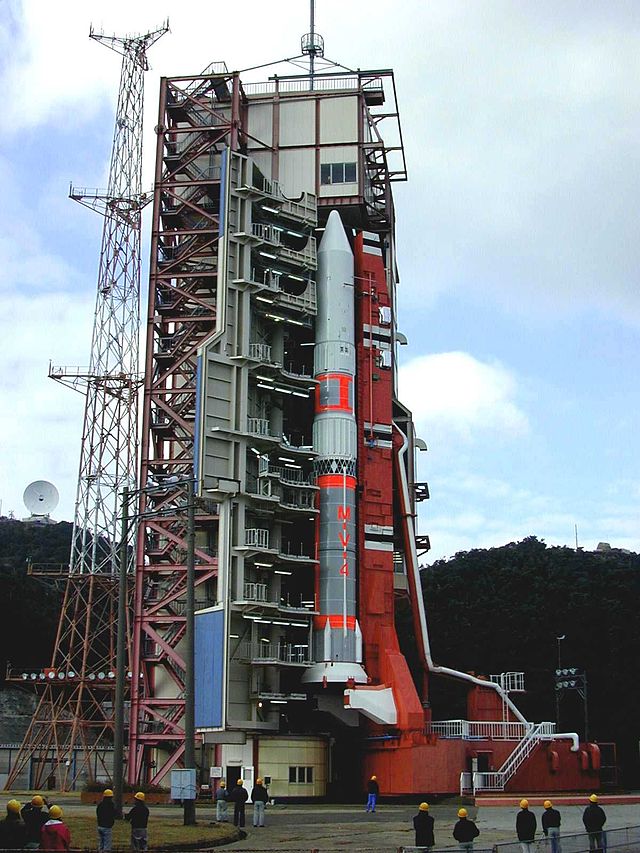Top Qs
Timeline
Chat
Perspective
M-V
Japanese solid-fuel rocket designed to launch scientific satellites From Wikipedia, the free encyclopedia
Remove ads
The M-V rocket, also called M-5 or Mu-5, was a Japanese solid-fuel rocket designed to launch scientific satellites. It was a member of the Mu family of rockets. The Institute of Space and Astronautical Science (ISAS) began developing the M-V in 1990 at a cost of 15 billion yen. It has three stages and is 30.7 m (101 ft) high, 2.5 m (8 ft 2 in) in diameter, and weighs about 140,000 kg (310,000 lb). It was capable of launching a satellite weighing 1,800 kg (4,000 lb) into an orbit as high as 250 km (160 mi).
The first M-V rocket launched the HALCA radio astronomy satellite in 1997, and the second the Nozomi Mars explorer in July 1998. The third rocket attempted to launch the Astro-E X-ray satellite on 10 February 2000 but failed. ISAS recovered from this setback and launched Hayabusa to 25143 Itokawa in 2003. The following M-V launch was the scientific Astro-E2 satellite, a replacement for Astro-E, which took place on 10 July 2005. The final launch was that of the Hinode (SOLAR-B) spacecraft, along with the SSSat microsat and a nanosatellite, HIT-SAT, on 22 September 2006.
Remove ads
Launch outcomes
0.5
1
1.5
2
1997
'98
'99
2000
'01
'02
'03
'04
'05
'06
- Failure
- Success
Launch history

Remove ads
Following program
A follow on to the M-V, called the Epsilon Rocket,[7] features a lower 1.2 tonne LEO payload capability. The development aim is to reduce costs, primarily by using the H-IIA solid rocket booster as the first stage and through shorter launch preparation time. Epsilon launches are intended to cost much less than the US$70 million launch cost of a M-V.[8]
The first launch, of a small scientific satellite SPRINT-A (Hisaki), took place in September 2013. The initial launches will be of a two-stage version,[citation needed] of Epsilon, with up to a 500 kilogram LEO payload capability.[9]
Potential as an intercontinental ballistic missile
Summarize
Perspective
Solid fuel rockets are the design of choice for military applications as they can remain in storage for long periods, and then reliably launch at short notice.
Lawmakers made national security arguments for keeping Japan's solid-fuel rocket technology alive after ISAS was merged into JAXA, which also has the H-IIA liquid-fuelled rocket, in 2003. The ISAS director of external affairs, Yasunori Matogawa, said, "It seems the hard-line national security proponents in parliament are increasing their influence, and they aren't getting much criticism... I think we’re moving into a very dangerous period. When you consider the current environment and the threat from North Korea, it's scary".[10]
Toshiyuki Shikata, a Tokyo Metropolitan Government adviser and former lieutenant general, claimed that part of the rationale for the fifth M-V Hayabusa mission was that the reentry and landing of its return capsule demonstrated "that Japan's ballistic missile capability is credible".[11]
At a technical level the M-V design could be weaponised quickly (as an Intercontinental ballistic missile, since only payload and guidance have to be changed) although this would be politically unlikely.[12] The M-V is comparable in performance to the LGM-118 Peacekeeper ICBM.
Remove ads
Comparable solid fuel rockets
See also
References
External links
Wikiwand - on
Seamless Wikipedia browsing. On steroids.
Remove ads

